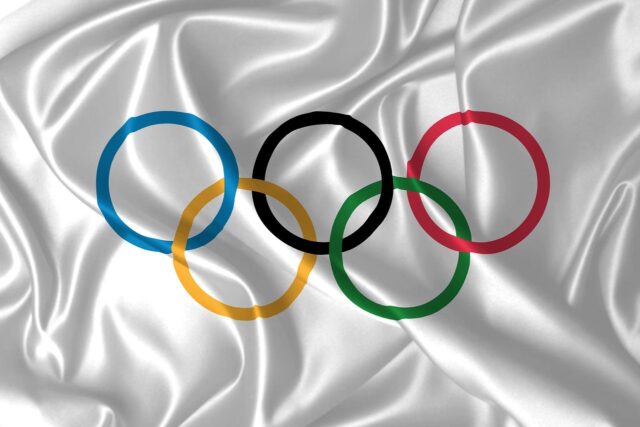10 Scandalous Doping Cases That Shook Fans Worldwide
Cheaters Never Win? Not Quite — The Strange World of Doping in Sports
There’s an old saying adults love to tell kids: “Cheaters never win.” It’s meant to instill a sense of fairness, integrity, and good sportsmanship. Unfortunately, it’s also wildly inaccurate. Cheaters do win. Frequently. That’s why they cheat in the first place.
Sure, if they’re caught, there may be consequences—loss of medals, suspensions, disgrace. But until that happens? They’re often breaking records, winning championships, and raking in sponsorship deals. In that sense, it’s a bit like crime: it doesn’t pay unless you get away with it.
In the world of sports, doping is perhaps the clearest example of this. The use of performance-enhancing drugs is a textbook case of cheating—and one that has plagued nearly every major sport at one time or another. But beyond the high-profile scandals and headlines, the history of doping is also filled with some genuinely bizarre, unexpected, and downright absurd stories.
From athletes using animal hormones to competitors sneaking in surprise cocktails, these aren’t your typical drug scandals. These are the ones that leave you scratching your head, wondering, What were they thinking?
10. Most Tour de France Winners Have Been Found Guilty of Doping

When Lance Armstrong’s doping scandal broke, it shocked the world—or at least, those who didn’t follow cycling. For casual fans, the idea that someone could cheat their way through the Tour de France was both scandalous and surprising. But for those in the know? It wasn’t a revelation—it was confirmation.
Doping has been rampant in the Tour de France for decades. In fact, it’s not an outlier at all—it’s practically a tradition. As of 2022, it was revealed that 42 out of the previous 55 Tour winners had, at some point in their careers, been caught or confessed to doping. That’s over 75% of champions with a chemical edge.
The sport has since made efforts to clean up its image. There’s been more testing, more accountability, and a lot more public shaming. And while the number of high-profile scandals has dropped in recent years, some would argue that’s just a result of better masking agents and tighter lips—not cleaner athletes.
If nothing else, Lance Armstrong’s epic fall from grace may have been the wake-up call the sport needed. Or at the very least, it proved that cheating your way to the top works—until it doesn’t.
9. A Belgian Bodybuilding Competition Was Canceled When Everyone Fled From Anti-Doping Officials

Steroids and bodybuilding have been linked in the public mind for decades. And while it’s unfair to assume every bodybuilder is juicing, scandals over the years have done little to clean up the sport’s image. In fact, incidents like this one don’t just fuel the stereotype—they practically pour gasoline on it.
In 2009, a Belgian bodybuilding championship was abruptly canceled when anti-doping officials made a surprise appearance. Instead of cooperating, every single one of the 20 registered competitors grabbed their bags and bolted—literally ran away. Imagine the confusion for the audience: one minute you’re waiting for flexing and posing, the next it’s a full-on stampede.
Officials explained that doping oversight in bodybuilding is rarely welcomed. Most organizers don’t invite anti-doping agencies, so inspections have to be ambushes. This particular event, despite being Belgian, was curiously held in the Netherlands—presumably an attempt to dodge Belgian regulators. But the plan backfired spectacularly.
With no athletes left to test, the event was called off, and officials came to the only logical conclusion: everyone had something to hide.
8. Russia’s Olympic Pee Swap Scandal: A Cheating Scheme Like No Other

Russia’s history at the Olympic Games has been… let’s just say, complicated. From accusations of state-sponsored doping to outright bans, the country has often found itself in hot water when it comes to fair play. But one particular scandal stands out as one of the most bizarre and blatant examples of cheating: the secret pee swaps at the 2014 Sochi Olympics.
Let’s rewind to the 2014 Winter Olympics in Sochi, Russia. After a disappointing performance at the 2010 Vancouver Games, Russia was determined to dominate the podium. But instead of focusing on training better athletes, they took a more… creative approach. Enter the world of doping – and not just any kind of doping, but a scheme so audacious it involved smuggling urine samples through mouse holes.
Here’s how it worked: Russian officials rigged the anti-doping lab by drilling a hole in the wall. They then swapped urine samples from athletes who had used performance-enhancing drugs with clean urine samples. The result? Athletes who had doped their way to victory were able to pass their drug tests with flying colors. In total, Russia won an astonishing 33 medals at Sochi, many of which were later stripped away once the scandal came to light.
The scheme was exposed by Grigory Rodchenkov, the former head of Russia’s anti-doping agency. Rodchenkov, who later became a whistleblower, revealed the shocking details of the operation, including the use of a mouse hole to smuggle the urine samples. His testimony led to widespread outrage and a four-year ban for Russia from all major international sporting events, including the Olympics.
Of course, Russia denied any wrongdoing, claiming the accusations were politically motivated. But the evidence was damning, and the country’s reputation took a massive hit. Even after the ban, investigations continued, and new allegations of doping emerged during nearly every Olympic Games since 2014. One Russian athlete even claimed that 99% of Russian Olympians were doping, a statement that, while extreme, highlights just how pervasive the issue has been.
Russia remains banned from events like the Olympics and international track and field competitions. And yet, every time they’re given a chance to compete, new scandals emerge – tampered data, manipulated samples, and more. It’s as if they just can’t seem to stop themselves.
The pee swap scandal is a stark reminder of how far some countries will go to win at all costs. But in the end, the truth always comes out – and when it does, the consequences are far worse than any medal could ever be worth.
7. Over Half of Athletes in Anonymous Surveys Admitted to Doping

Most athletes caught doping didn’t exactly volunteer the information—it’s not great PR. But offer them anonymity, and the truth gets a little more honest…and a lot more alarming.
Back in 2011, two anonymous surveys were conducted at major international competitions to get a clearer picture of how common doping really was. The results? Not great. While the World Anti-Doping Agency (WADA) claimed only about 2% of athletes were using banned substances, the surveys told a very different story: up to 57% of athletes admitted to doping within the past year.
The surveys polled over 2,000 athletes. At the World Championships, 29% came clean. At the Pan-Arab Games? A staggering 45%. The results first came to light in 2013 but weren’t officially published until six years later. Why the delay? Well, the findings weren’t exactly the kind of news sports organizations wanted to promote.
One of the study’s authors later suggested that the suppression was no accident—WADA and other governing bodies reportedly pushed back hard, unhappy with data that painted doping as the norm, not the exception.
6. Nike Alphafly Shoes: The Sneakers That Caused a Doping Scandal

When we think of doping in sports, the first thing that usually comes to mind is performance-enhancing drugs. But there’s another form of cheating that’s just as controversial – technological doping. And one of the most infamous examples? The Nike Alphafly shoes, which were banned from the Tokyo Olympics for giving runners an unfair advantage.
What makes these shoes so special (or so controversial)? The Nike Alphafly line, particularly the ZoomX Vaporfly Next%, is designed with cutting-edge technology to enhance performance. They feature extra cushioning, a carbon-fiber plate, and a highly responsive foam that provides incredible energy return. In short, they make runners faster and more efficient. So efficient, in fact, that governing bodies like World Athletics decided they crossed the line from “innovation” to “unfair advantage.”
The controversy really blew up when Eliud Kipchoge used a prototype of these shoes to make history. In 2019, Kipchoge became the first person to run a marathon in under two hours during a special event in Vienna. While the run wasn’t an official record due to pacers and other factors, many speculated that the Alphafly shoes played a huge role in his performance. The shoes were later used by other runners to smash records, and the complaints started rolling in.
World Athletics eventually stepped in, banning the shoes from competition in 2020. The reasoning? The technology in the Alphafly shoes was deemed to violate the spirit of fair play. Specifically, the combination of the carbon-fiber plate and the ultra-responsive foam gave runners an edge that wasn’t available to everyone. It wasn’t just about the shoes being high-tech – it was about the fact that they were so advanced that they could turn an average runner into a record-breaker.
The ban didn’t stop there. The Alphafly shoes were also prohibited from being used at the Tokyo Olympics, forcing athletes to compete in older, less advanced models. Nike, of course, was not thrilled about the decision, arguing that the shoes were simply the next step in athletic innovation. But governing bodies insisted that the gap between those who could afford the shoes and those who couldn’t was simply too wide.
The Nike Alphafly saga raises an interesting question: where do we draw the line between innovation and cheating? Sports are always evolving, and technology plays a huge role in that evolution. But when does that evolution become unfair? For now, the Alphafly shoes remain banned, but the debate over technological doping is far from over.
5. In 1930, Tour de France Officials Had to Clarify That Drugs Wouldn’t Be Provided

The Tour de France has been a symbol of endurance for over a century, but its early years were a bit… questionable. We’ve already mentioned that many winners have been caught doping, but let’s rewind to the 1930s, when things were even more chaotic.
Back then, it wasn’t uncommon for cyclists to drink wine and smoke cigarettes during the race, and substances like ether and nitro were part of the game. So rampant was the use of performance enhancers that in 1930, the official rulebook had to include a note to remind riders that the Tour would not provide drugs.
Yes, you read that right—race officials actually had to tell competitors that they wouldn’t be supplying substances to help them out. The reason? The riders were so accustomed to doping that they apparently expected the Tour to stock them up with performance-enhancing drugs before they hit the road.
4. Doping in Chess? Meet Ritalin, the Unexpected Performance Enhancer

When you think of doping, your mind probably jumps to athletes sprinting faster or lifting heavier weights. But doping isn’t just a problem in sports – it’s an issue in any kind of competition where people are pushing themselves to the limit. That includes chess, yes, chess. While it might not involve muscles or steroids, the mental game can be just as intense, and some players have turned to substances like Ritalin to gain an edge.
Believe it or not, anti-doping measures exist in chess. The World Chess Federation (FIDE) has rules in place to ensure fair play, and players can be tested for performance-enhancing substances. Why? Because in high-stakes tournaments, where millions of dollars and reputations are on the line, some players might be tempted to use drugs to sharpen their focus or enhance their cognitive abilities.
One of the most infamous incidents in chess doping history happened in 2008. A professional chess player had a very public meltdown when he was asked to provide a urine sample during a tournament. The player, who was from a non-English-speaking country, reportedly didn’t fully understand the request due to language barriers. While no test was conducted, the incident became a symbol of the challenges of enforcing anti-doping rules in chess. To this day, it remains the most well-known doping-related event in chess history, even though no one was ever found guilty of using performance-enhancing drugs.
But the chess world isn’t free from doping scandals. Over the years, there have been whispers of players using substances like Ritalin (a drug commonly prescribed for ADHD) and modafinil (a wakefulness-promoting drug). These substances are believed to enhance focus, concentration, and mental endurance – all critical traits in a game that can last for hours.
Interestingly, studies have shown that while these drugs might not make players faster, they can make them better overall. Players on Ritalin or modafinil tend to make fewer mistakes and play more strategically, even if their raw speed might decrease slightly. This makes them particularly appealing in long, grueling matches where mental stamina is key.
However, enforcing anti-doping rules in chess is easier said than done. In one case, a player had to provide three urine samples in a row because he had drunk so much water that his first two samples were too diluted. The process became so exhausting that it raised questions about whether the testing itself was fair.
Despite the challenges, FIDE continues to monitor and enforce anti-doping policies in chess. While there have been no confirmed cases of doping, the mere existence of these rules shows how seriously the organization takes fair play – even in a game that’s often seen as purely intellectual.
3. Racing Pigeon Doping is a Big Problem

Doping isn’t just a human problem. In fact, pigeons—yes, pigeons—are not exempt from the world of performance-enhancing substances. When it comes to racing pigeons, some owners are willing to do whatever it takes to give their birds the upper wing (pun intended).
If you’re unfamiliar with pigeon racing, it’s exactly what it sounds like. Homing pigeons are released from distances as far as 1,200 kilometers, and the bird that gets back home first wins. Belgium, the heart of pigeon racing, has been hosting these races since 1818. But in a sport where speed is key, it’s not just about the pigeons’ natural abilities—some racers have turned to doping to give their birds an edge.
The substances used range from steroids to painkillers, with the goal of boosting endurance and performance. In 2013, six Belgian pigeons were tested for drugs, and while five were found with anti-inflammatory substances, the sixth bird had been given cocaine. Yes, there are people out there turning pigeons into cokeheads for the sake of winning races.
Why? The same reason doping happens in any sport—money. One racing pigeon sold for an astonishing $430,000 in May of that year. When there’s that much cash in the game, some will go to any lengths to win, even if it means doping their feathered competitors.
2. Esports are Subject to Doping Scandals

If you’re of a certain age, you might scoff at the idea of esports being on the same level as traditional sports. But here’s the thing: esports are incredibly popular, fiercely competitive, and there’s a ton of money at stake. And, just like in traditional sports, where there’s money, there’s a breeding ground for doping scandals.
The first major doping scandal in esports occurred in 2015, when a Counter-Strike championship team was caught up in an Adderall controversy. Adderall, the prescription drug used to treat ADHD, was being used by the players to boost focus during the intense competition. Unlike physical sports where steroids or performance-enhancing drugs might be used, in esports, competitors need a mental edge. So instead of steroids, they turn to focus-boosting substances like Adderall, Ritalin, and other ADHD medications believed to improve concentration, focus, and reaction time.
Since that incident, more accusations of doping have surfaced, yet regulation and testing in the world of esports have been slow to catch up. The promises of a crackdown have yet to yield the results many had hoped for, leaving the esports world with a somewhat murky relationship to drugs.
1. The Speedo LZR Racer: The Swimsuit That Was Banned for Being Too Good

When it comes to technological doping, few examples are as striking – or as controversial – as the Speedo LZR Racer swimsuit. This high-tech suit wasn’t just a piece of swimwear; it was a marvel of engineering that gave swimmers an edge so significant, it was eventually banned for giving an unfair advantage.
The story of the LZR Racer begins with Speedo’s quest to create the ultimate swimsuit. To do so, they enlisted the help of NASA scientists, who helped design a suit that could reduce drag and improve swimming efficiency. The result? A super microfiber suit that was lighter, sleeker, and more advanced than anything else on the market. The LZR Racer wasn’t just a swimsuit – it was a performance-enhancing device.
Here’s how advanced it was: the suit reduced drag by 38% and improved swimming efficiency by up to 5%. In the world of competitive swimming, where races are often decided by fractions of a second, that kind of advantage is huge. And it showed. During the 2008 Beijing Olympics, nearly every swimmer who broke a record was wearing the LZR Racer. In fact, 62 world records were shattered by swimmers donning the suit. It was a game-changer – literally.
But the LZR Racer wasn’t without its critics. Many argued that the suit wasn’t just a piece of equipment; it was a technological crutch that gave certain swimmers an unfair advantage. At $550 a pop and only good for 10 uses before its performance-enhancing properties wore off, the suit was seen as a luxury item that not every swimmer could afford. Critics claimed it diminished the role of natural ability, turning swimming into a competition not just of skill and training, but also of who could afford the best gear.
The backlash eventually led to action. In 2009, the international governing body of swimming, FINA (Fédération Internationale de Natation), stepped in and banned the LZR Racer along with other similar high-tech suits. The ban was based on the principle that swimming should celebrate natural ability, not technological enhancements.
The ban on the LZR Racer marked a turning point in competitive swimming. It forced athletes to rely more on their training, technique, and physical conditioning rather than cutting-edge technology. But it also raised important questions about the role of technology in sports. Where do we draw the line between innovation and unfair advantage?
Today, the LZR Racer is remembered as a swimsuit that pushed the boundaries of what was possible – and what was acceptable – in competitive swimming. While it’s no longer allowed in official races, its legacy lives on as a reminder of how technology can both elevate and challenge the world of sports.

























